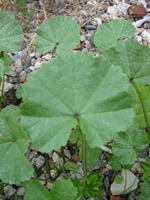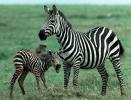
Treehouse Investigations
Treehouse Investigations
- Marine Discovery Slideshow
- Explore the rocky intertidal zone at Station Beach in Puerto Peñasco, México by watching this slideshow.
- Marine Discovery Lab
- Join students in the lab to explore marine life of the Gulf of California on the Marine Discovery Field Trip. View movies of students dissecting marine animals and exploring key concepts about marine diversity.
- Morphological and Functional Diversity of Ant Mandibles
- Created by Chris Schmidt, a PhD student in Entomology at the University of Arizona. The page is accessible to a wide range of learners as it uses images and diagrams to explain the function of ant mandibles (jaws).
- The Snail Investigation Inquiry Cycle
- This treehouse documents Mrs. Clayberg's 6th grade classes exploring their ideas and questions about snails. This treehouse is also a teacher resource.
- Weeds in Rylan's Yard
- Learn about a weed that appeared in Rylan's yard during the spring rainy season in Tucson, Arizona. Find out how Rylan researched his questions, and explore what makes a plant a weed and what is considered a native plant.
- What Makes a Primate a Primate?
- Find out about what makes a primate a primate by looking at skeletal features, evolutionary trends and primate behavior. Built by Kathryn Orzech, a student pursuing a degree in biocultural and medical anthropology.
Suggestions for Treehouse Building Investigation Activities
Choose an investigation to publish a:
- Science experiment or project
- Field study
- Scientific investigation or research study
- Science journal entry
- Scientific observation of an organism
Visit Treehouse Building Steps for guidance on how to build your treehouse.
ToL Biodiversity Exploration

Copyright © 2005
Rylan Higgins.
See Weeds in Rylan's Yard for an example of a ToL Biodiversity Exploration.
What's that under those rocks in your yard, or over in the corner burrowing down into the earth? Did you hear something chirping in that tree, and buzzing in that flower? We want to know!
Write down your observations and draw or snap photos of the creatures and plants you find while out exploring. You may even want to try recording the sound of frogs croaking or capture some video footage of a spider spinning a web. See materials you need and materials you might want below for help. You may also want to expand your exploration into a Local Life Investigation.
ToL Local Life Investigation
Make everyday life more interesting by getting acquainted with the living things around you. Become a local expert on something in your neighborhood that catches your attention. Check back soon for some of our first Local Life Investigations.
This activity begins in the exact same way as ToL Biodiversity Exploration, but involves learners in designing and conducting observational and experimental investigations. See materials you need and materials you might want below for help.
Explore Local Life!

Copyright © 1999 California Academy of Sciences.
Vanessa annabella, West coast lady butterfly (Papilionoidea: Nymphalidae). San Leandro (Alameda County, California, USA)

Copyright © 2005 David Bygott. Equus burchelli, Ngorongoro Crater, Tanzania

Copyright © 2005 David Bygott. Eremobates sp. Tucson, AZ, USA. Fresh dead specimen, imaged by flatbed scanner.

Copyright © 2005 David Bygott. Ruby, AZ, USA. This crab spider had just caught the fly while perched in an oleander flower.
- Plan to observe a habitat (a space in your house, classroom, backyard, neighborhood) that you have easy access to visiting.
- Make a few observations and take notes on things that you are curious about.
- Do some background research on the organisms that you are inquiring about (e.g. look up information on the Internet, in books and ask some other people about what they know).
- Decide on a question that you would like to answer through observation done over time, or by testing out your question with an experiment. Write your question down. See some investigations you could try below for some suggestions.
- Come up with a plan for how you can answer your question. If you can't figure out a plan to test your question, you may need to revise, modify or change your original question.
- Write down the materials you will need to conduct your investigation. Paper and pencil are a must! See materials you need and materials you might want below for help.
- Record a hypothesis, or educated guess, as to what you think will be the outcome of your observation or experiment.
- Decide on data that you can record that might have a connection to the question that you are asking, and that you can easily record each time you do an observation. You may want to create a chart for yourself where you can record each category of information.
Be aware that you might not be able to figure out what kind of data you should record before you observe more and take notes! That's ok, the fun part about investigations is that as you observe and hone your questions, you can determine exactly what kind of information you are looking for in your work.
For example, if you are trying to discover which organisms are most active in the habitat you are observing at different times of the day, you may want to record data about the:- air and/or soil temperature (you will need thermometers).
- time of day (you will need a watch).
- types of activities performed by the organisms being observed (you will need your five senses, and perhaps some binoculars or magnifying glasses would be useful).
- Schedule observation times to write down your observations, and draw or snap photos of the creatures and plants you are observing. You may even want to try recording sounds or capturing some video footage. Again, an observation notebook and pencil are a must!
- When you have collected enough data you can stop and begin to analyze the information you have collected. Creating charts, graphs, Venn Diagrams (intersecting circles) and tables are very helpful for organizing and analyzing the information you have collected.
- When you have all of your information you can begin to build your treehouse in order to share your results, experiences and observations with others! Of course, you can also log-in and begin building your treehouse while you are investigating. It is especially helpful to upload media to the ToL in advance of creating your treehouse.
Materials you will need:
- Your five senses! Hearing, seeing, smelling, feeling and tasting. Always be careful when using your senses; don't taste or smell anything too closely without asking a teacher or an adult if it is ok. Always wash your hands after touching what you are observing.
- Pencil and paper for recording your observations.
- Your curiosity!
Materials you might want:
- Magnifying glass
- Microscope
- Scale
- Thermometer
- A digital camera, video camera or audio recording device
- A field guide for identifying organisms
- GPS device
- A watch or other time telling device
Local Life Investigations you could try:
- Investigate the food sources of the insects or other wildlife in your neighborhood. With ants, you can watch the food they are bringing back to their nest and carefully take the food and examine it. With plants, you can investigate what types of insects or other creatures might be munching on their leaves, or partaking of a bloom's nectar. You can also carefully collect scat (make sure to ask an adult first if it is safe to do so) and analyze it for its components, or observe spider webs and record and examine the types of insects caught in their webs. Compost piles and gardens are a great place to watch for who is eating what.
- Investigate how time of day, temperature and/or season affect the presence and behavior of local organisms.
- Investigate how human intervention affects wildlife.
 Go to quick links
Go to quick search
Go to navigation for this section of the ToL site
Go to detailed links for the ToL site
Go to quick links
Go to quick search
Go to navigation for this section of the ToL site
Go to detailed links for the ToL site